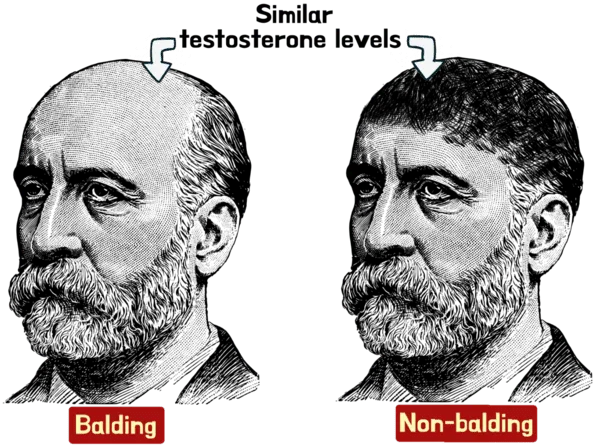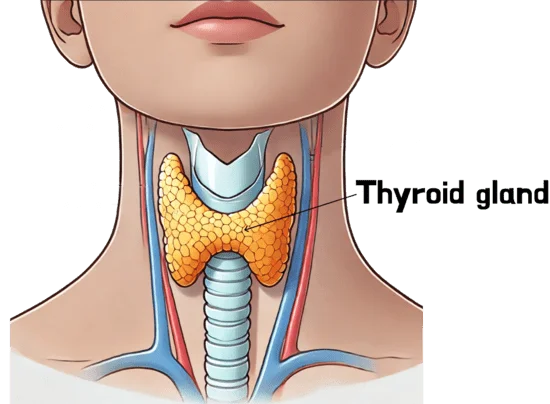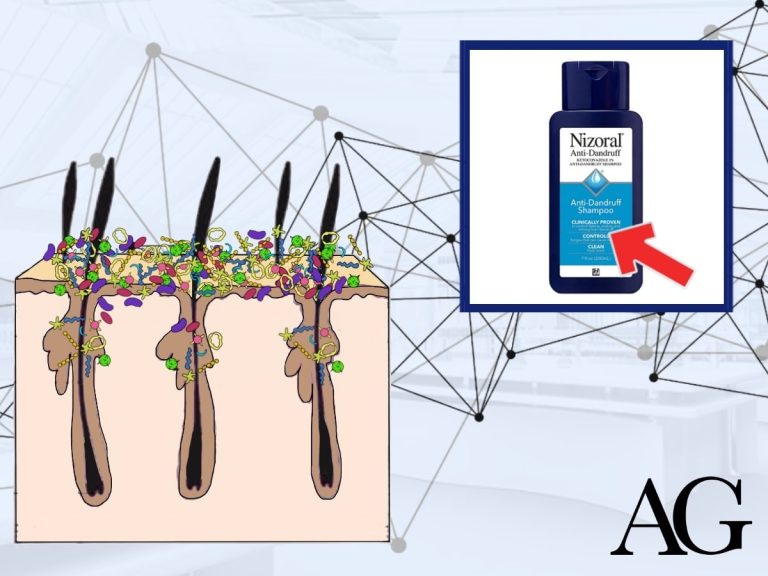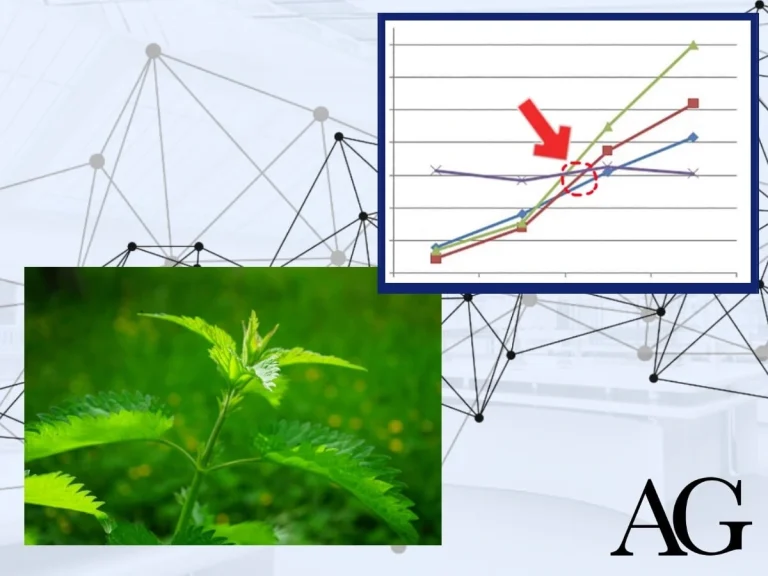We’ve all heard someone say that high testosterone causes hair loss. But is this actually true, or is this just an urban myth that spreads in social media posts such as the one below?

The truth is not quite as simple as this post on X suggests. The relationship between testosterone and hair loss is more nuanced. In this article, we discuss how testosterone is linked to hair loss.
Does high testosterone cause hair loss?
Regarding pattern hair loss, we know the following to be true:
- Testosterone is converted into a more potent metabolite dihydrotestosterone (DHT) by the 5α-reductase enzyme.
- DHT is higher in balding scalps.
- It has been shown time and time again that DHT is a strong driver of hair follicle miniaturisation.

Given this chain of events, it might seem reasonable to think that higher levels of testosterone would lead to more hair loss. After all, eunuchs (castrated men) produce next to zero testosterone and never go bald. Since the absolute lack of testosterone protects men against androgenic alopecia, one could say that testosterone is responsible for pattern hair loss.
However, when studying pattern baldness in non-castrates (i.e. the vast majority of the population), the link between testosterone and hair loss becomes much less obvious. In fact, studies show that high testosterone levels do not lead to a higher incidence of hair loss compared to people with low (but not zero) testosterone. Here is some evidence:
To begin with, some studies have found that there is no statistically significant difference in testosterone levels between males with pattern hair loss versus non-balding men.

Secondly, we also know that hair thinning progresses in old age, despite the lower testosterone levels men naturally experience with aging.
Lastly, it has been demonstrated that male pattern hair loss occurs in males with both high and low testosterone levels.
Clearly, testosterone is not the only variable responsible for hair thinning.
Serum DHT vs tissue DHT
In isolation, DHT does not cause hair thinning. DHT only causes hair thinning when it binds to the androgen receptor (AR) in hair follicle cells.

We know this, in part, because individuals with Androgen Insensitivity Syndrome (AIS) don’t experience pattern baldness. AIS is a condition where people have lacking or faulty androgen receptors therefore, DHT cannot bind to them as well.
This study concludes that serum DHT (i.e. unbound DHT) has no correlation to hair loss. Whatsmore, this study mentions that serum DHT is actually higher in men young men without hair loss!
So, neither free testosterone nor free DHT are associated with higher rates of hair loss. High levels of tissue DHT (DHT bound to the androgen receptor) in the scalp, is absolutely a driver of hair thinning.
Higher levels of testosterone does not necessarily lead to higher tissue DHT. For instance, elderly men have declining testosterone levels but increasing incidences of hair thinning.
One of the reasons for this is the changing ratios of metabolites generated by testosterone with age. It turns out that throughout life, testosterone gets converted into many byproducts (not just DHT). For example, testosterone might get converted into androstenedione, androsterone, etiocholanolone and estradiol amongst other hormones.
As men age, they experience testosterone level decline. However, the conversion of testosterone shifts more towards DHT, making DHT levels much more constant.
Because of this, we know that more testosterone does not necessarily mean more DHT. DHT levels, in part, depend on how much 5α-reductase is made available in the body. And, after all, it is DHT bound to the androgen receptor, not free testosterone, that is associated with hair loss.
Low testosterone and hair loss
Interestingly, while almost-zero testosterone protects men against pattern hair loss (as seen in castrates), low testosterone may be linked to a higher incidence of androgenic alopecia than men with healthy levels of testosterone.
This study found that men with premature pattern baldness have low testosterone. On the other hand, other studies have found no increased rate of pattern baldness in men with low levels of testosterone.
This study found that testosterone injections improved hair growth in androgen-deficient women. Specifically the study mentions that “subcutaneous testosterone therapy was found to have a beneficial effect on scalp hair growth in female patients treated for symptoms of androgen deficiency”.
Furthermore, not a single patient (out of 285) in this study reported scalp hair loss on testosterone therapy.
So, in some cases, more testosterone results in less hair loss!!
Testosterone: Estrogen ratio imbalances and hair loss
When women go through menopause, their estrogen levels decrease. In fact, estrogen can drop by up to 90% during menopause. This is often accompanied by hair loss. We wrote about this in this article.
Interestingly, young men with pattern hair loss tend to have a testosterone to estrogen imbalance that swings in the opposite direction. Young balding men tend to have either lower testosterone or elevated estrogen levels.
The testosterone to estrogen hormonal balance is partly regulated by the thyroid. The thyroid is a butterfly-shaped gland in the throat.

An under-active thyroid (hypothyroidism) can disrupt hormonal balances in favour of hormonal profiles that are closely associated with pattern hair loss. Furthermore, both an under-active and over-active thyroid has been linked to hair shedding disorders such as telogen effluvium.
Other hormonal profiles associated with hair loss
This study shows that men with pattern baldness tend to have a higher ratio of luteinizing hormone (LH) versus follicle stimulating hormone (FSH) compared to non-balding men. Furthermore, balding men tend to have higher prolactin levels and lower sex hormone binding globulin (SHBG).
Interestingly, this hormonal profile is the same in women with PCOS. PCOS is a condition affecting some women denoted by the formation of cysts on the ovaries. Women with PCOS often experience pattern hair loss.
Inflammation, inflammation, inflammation
At this point, we have established that high testosterone is not a very good predictor of hair loss. We have also covered that hair loss is associated with various other hormonal imbalances.
Do these hormonal profiles have anything to do with increasing DHT? And where does inflammation fit into the equation?
- Low testosterone is found to be associated with systemic inflammation.1
- An imbalance in testosterone to estrogen ratio is also associated with inflammation.
- Declining estrogen levels during menopause can cause inflammation throughout the body.2
- Chronic, low grade inflammation is often observed in balding scalps.
Some hair loss theories suggest that DHT is elevated in balding scalps as a response to chronic inflammation in the scalp.
We know that:
- This study suggests that DHT is anti-inflammatory.
- We also know that DHT binding to the androgen receptor can cause dermal papilla cells to secrete TGFβ-1. TGFβ-1 is a signalling protein that can trigger the body to lay down fibrotic tissue which can in turn help resolve inflammation.
- DHT tends to arrive at sites of inflammation.
- 5alpha-reductase tends to arrive at sites of inflammation.
The body is a complex cocktail of hormones and biological pathways. There is nuance to be a counted for, however, scalp inflammation clearly plays a role in the pathogenesis of hair loss. We wrote about this in more depth in this article.
Parting thoughts
Indeed, testosterone is a piece of the hair loss puzzle. However, simply saying ‘testosterone causes hair loss’ is wrong.


